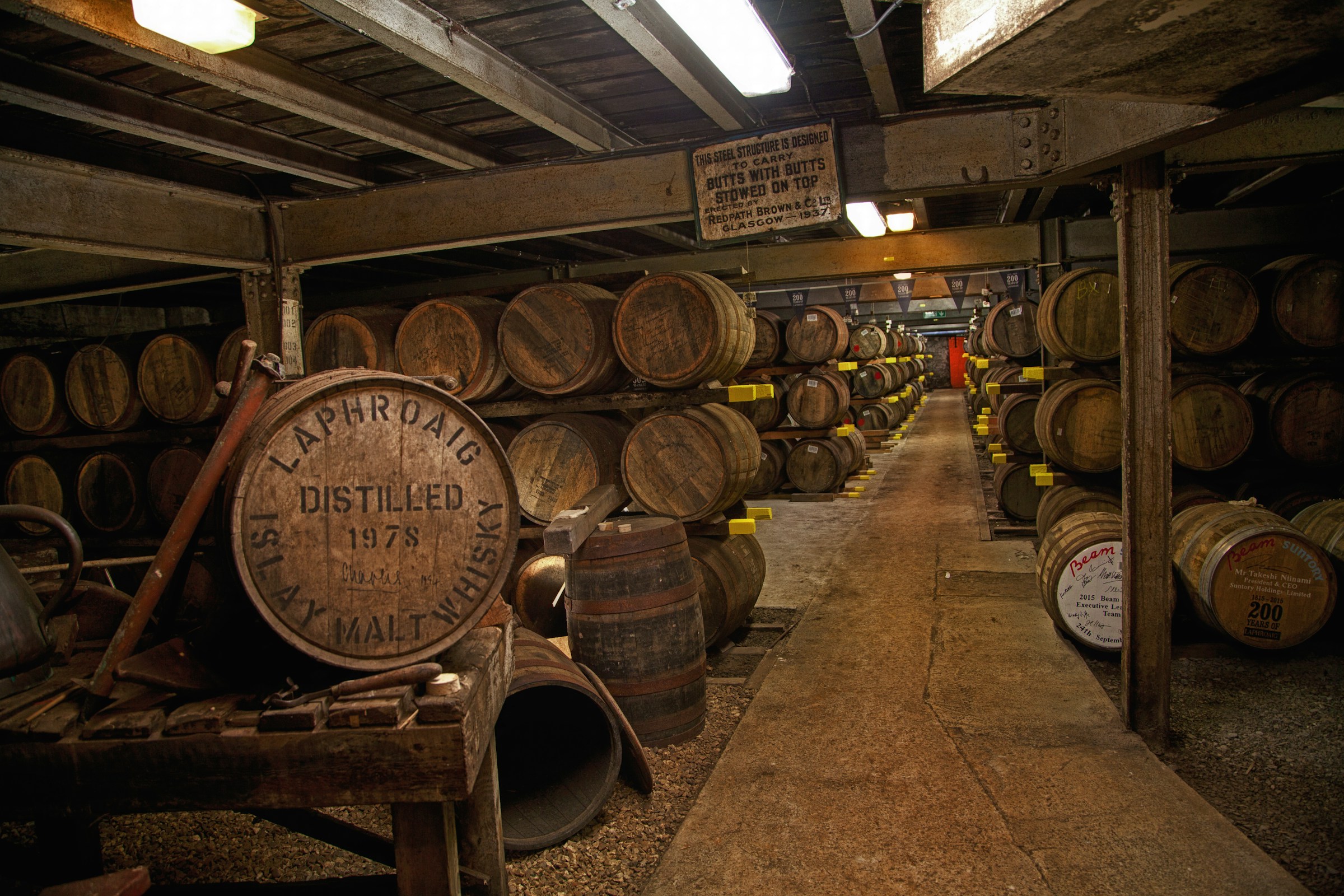According to the Scotch Whisky Regulations, a spirit is only allowed to be called Scottish whisky if it abides to the following terms:
- The barley was mashed, fermented and distilled at a distillery located in Scotland, with local water.
- It has not been distilled at an alcoholic strength by volume of more than 94.8% (to ensure it retains aromas and tastes from its raw materials).
- It has matured in oak casks with a capacity of 700 liters or less, for a minimum of 3 years, and has matured in excise warehouses or other permitted places, residing within Scotland.
- No substances other than water and/or plain caramel coloring have been added to it.
- The end product has an alcoholic strength by volume of at least 40%.
It furthermore offers restrictions on mutually exclusive types of Scotch Whisky:
- Single Malt Scotch Whisky has been distilled by batch distillation from only water and malted barley in pot stills at a single distillery.
- Single Grain Scotch Whisky has been distilled at a single distillery, but may contain other whole grains than malted barley.
- Blended Malt Scotch Whisky indicates a blend of at least two Single Malt Scotch Whiskies that have been distilled at different distilleries.
- Blended Grain Scotch Whisky is a blend of at least two Single Grain Scotch Whiskies that have been distilled at different distilleries.
- Blended Scotch Whiskies are a blend of at least Single Malt Scotch Whiskies and at least one Single Grain Scotch Whiskies.
There are also some other types that are not specifically mentioned by the act, but that might be worthwhile to mention.
- Blended Malt Whisky (formerly known as Vatted Malt) are blends of Single Malt Scotch Whiskies from one or more distilleries. As the name implies, these only contain Single Malt whiskies (no grain whiskies). They are matured in a barrel for a period of one year after blending. The age marked on the bottle will always reflect the age of the youngest whisky in the blend.
Whisky regions in Scotland
Currently, there are 6 major whisky regions distinguished in Scotland: Lowlands, Highlands, Speyside (once part of the Highlands), Campbeltown, Islands (also originally considered part of the Highlands, the islands is a group-name for all whisky producing Scottish islands, excluding Islay) and Islay. All the areas have specific characteristics that distinguish them from the other regions (though in the case of Highlands and Speyside specifically, there will be some overlap between the two areas). These characteristics are due to the composition of the region (for instance, the type of stone found in the earth, which influences the water, or particular processes in use in a region (Lowland whiskies, for instance, used to be triple distilled, as opposed to the other regions going for double-distillation (though there are exceptions, like the 2 and a half distillation used by SpringBank)). Below, the areas of Scottish whisky and their specifics will briefly be discussed. Please do keep in mind that as stated, there might be some overlap between certain areas.
Lowland
Lowland whiskies typically were triple distilled, and the distillers nowadays typically do not use peat in their kilning process, which results in smoother or lighter tasting whisky, that also appears slightly more dry (due to the carboniferous rock present in the Lowlands). In general, Lowland Whiskies are nice summer-evening whiskies that can offer a nice alternative to the traditional white (or Rose) wines, for those longing for something a bit more strong and/or distinguished.
Highland
By far the biggest region in Scotland, Highlands water will carry traces of Peat, as well as minerals derived from the sandstone and limestone that is present in-between the hard granite, and traces of heather. This typically results in a round, slightly dry Whisky, with some minor hints of peat.
Speyside
Hard granite in the earth ensures very little minerals will have made it into the water. Both peat and heather are more noticeable here than in the Highlands, leading to soft water with a slightly acidic level. A lot of whisky lovers swear by Speyside whiskies, which usually are complex, yet elegant, and which carry an influence of peat.
Campbeltown
Once the hub of Whisky production in Scotland, only three distilleries currently are active on Campbeltown. Due to being located on an island, the whiskies produced here are brinier than their Lowland, Highland and Speyside counterparts, with peat noticeably making its presence known.
Island
Surrounded by the ocean on all sides, the earth on the Islands tends to be more peaty, owning to seaweed presence in the soil. The ocean winds add saltiness to the whiskies when they are maturing in the warehouses. Salty, smoky and well rounded whiskies offer a bit more of an aggressive experience. To increase the peat taste of the whisky, Island whisky will typically have seen peat used in kilning phase of the distillation process.
Islay
Harboring the oldest rock in Scotland, and with soil full of peat and seaweed, the Islay whiskies are a more rough version of the Island Whiskies. The boggy land is constantly under the influence of rain and salty winds coming from the sea, leading to oily, salty, even medicinal smelling Whisky. Like Island whiskies, peat will typically be used to stop the germination of the grain in the kilning process. The smokiness from the peat will stick to the grain, and be present throughout the rest of the distillation process.
